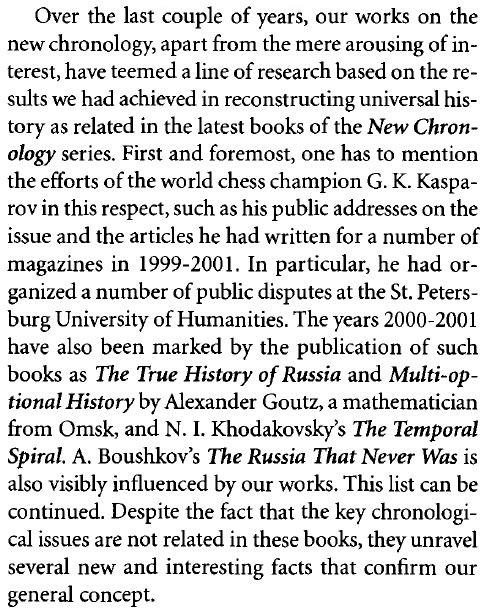Chess Notes
Edward Winter
When contacting us by e-mail, correspondents are asked to include their name and full postal address and, when providing information, to quote exact book and magazine sources. The word ‘chess’ needs to appear in the subject-line or in the message itself.
| First column | << previous | Archives [119] | next >> | Current column |
8675. Kasparov and New Chronology (C.N. 8671)
From Olimpiu G. Urcan (Singapore):
‘In a multiple-volume work History: Fiction or Science? Anatoly T. Fomenko, one of the key proponents of New Chronology, acknowledged Kasparov’s support several times. Two examples come from Volume 1 (published in 2003), in the introductory essay “History of New Chronology” by Fomenko and Gleb V. Nosovsky:
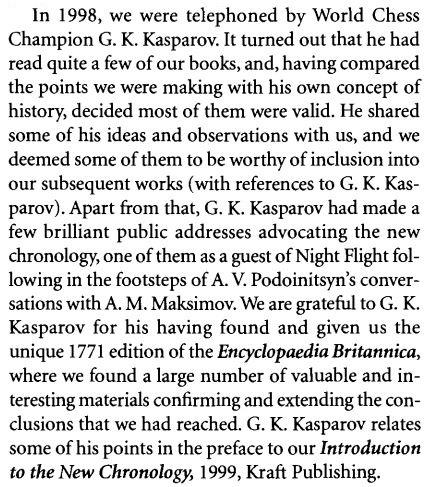
Kasparov’s involvement in this fringe theory has seldom been mentioned in the Western press.
In an article entitled “King Arthur was really a Russian, say Slavs” on page 21 of the Daily Telegraph, 19 April 2001 Marcus Warren, a Moscow-based reporter, wrote:
“The school [New Chronology] has also secured the energetic support of Garry Kasparov, the chess grandmaster.”
Warren quoted Kasparov’s own words:
“‘I consider myself to be part of a team. It’s quite a big group and it’s expanding’, said Kasparov, who is fronting a television series on the inconsistencies of traditional chronology.”
On 24 April 2001 Warren wrote a follow-up article for the Telegraph giving more particulars regarding Kasparov and New Chronology and with several quotes.
Internet searches offer some clues for further research. On 23 August 2010 Timothy Taylor posted on his website the transcript of a 2001 interview (“originally published in Saturday Night online, 2001”) in which he spoke at length with Kasparov about New Chronology.
An essay by Kasparov, “Mathematics of the Past” , in which he espoused his theories on history, has circulated on the Internet. For some years it was available at www.new-tradition.org, an outlet used by New Chronology supporters which now seems defunct, but the full text of the essay is easily found elsewhere on-line.
Many mainstream academic papers and serious books dealing with the emergence and impact of such fringe theories in post-1990 Russia mention that Kasparov became one of Fomenko’s most prominent supporters. For instance, on page 83 of Russia in Search of Itself (Baltimore, 2004) James H. Billington, a prestigious American academic, specializing in Russian culture, and the 13th Librarian of the US Congress, wrote:
“All of this [the New Chronology theories] might have been quietly blown away in the wind tunnels of academia had not the popular chess hero Garry Kasparov lustily taken up the cause of the new chronology in the mass circulation journal Ogonek. Insisting that ‘whoever controls the past, controls the future’, Kasparov accused the Germanophile Romanov dynasty of destroying the records of Russia’s harmonious links with its Eastern neighbors and inventing insulting names for all their enemies.”
For Kasparov’s words “whoever controls the past, controls the future”, on pages 184-185 Billington cited as his source an article by Kasparov, “Istoriia s geografiei”, in the 21/22 and 23 issues of Ogonek, published in 2001. Perhaps C.N. readers with access to Russian archives will be able to supply those articles in full, as well as footage or transcripts of any media appearances by Kasparov’s which are relevant to this topic.’
A feature article has been created for further documentary material, Garry Kasparov and New Chronology.
8676. Nimzowitsch v N.N.
From page 33 of Brilliance in Chess by Gerald Abrahams (London, 1977):
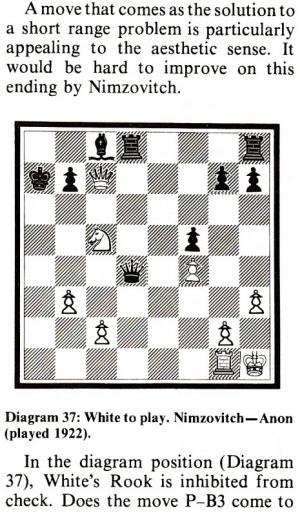
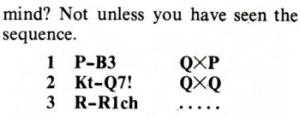
This attractive finish occurred not in 1922 but in 1916, and was published on page 136 of the June 1918 Deutsche Schachzeitung:
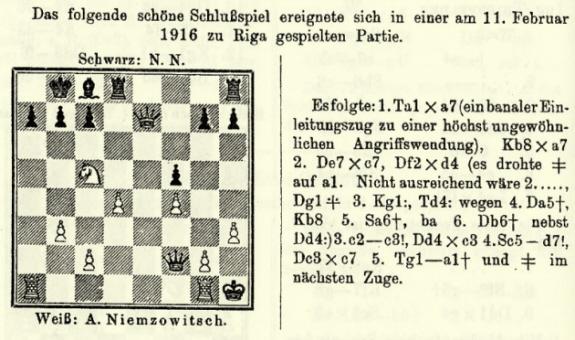
8677. Tartakower v Colle
The carelessness of Abrahams’ Brilliance in Chess is illustrated by the heading of a Tartakower v Colle game on page 44:

The oddest error is the statement that the game was ‘played at Eze in 1930’. The venue was Nice, and, as noted on page 196 of the June 1930 BCM, a tournament book was brought out by ‘Eze’:
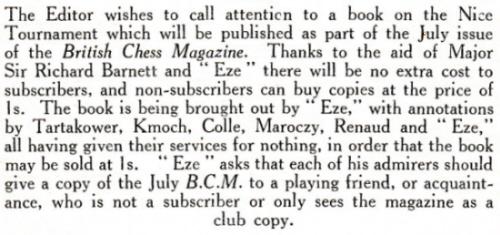
On page 353 of the September 1981 BCM Brian Reilly mentioned that ‘Eze’ was the pseudonym of O. Telling of Denver, CO, USA, and page 751 of the unpublished 1994 edition of Chess Personalia by Jeremy Gaige gave this entry:

8678. Kasparov and New Chronology (C.N.s 8671 & 8675)
Vitaliy Yurchenko (Uhta, Komi, Russian Federation) draws attention to Kasparov’s Foreword on pages 10-28 of Введение в Новую Хронологию. Какой сейчас век? by G.V. Nosovsky and A.T. Fomenko (Moscow, 2001).
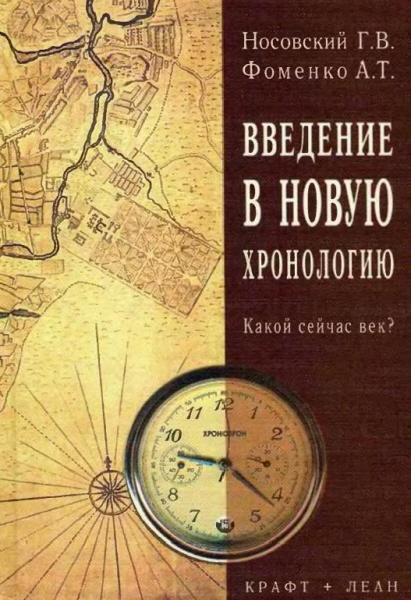
Below we offer a translation of two passages which show Kasparov’s overall view of the theory of New Chronology. They come from, respectively, pages 9-10 and 28 of the Foreword, which is dated 1999:
‘About a year and a half ago I came across a few books by A.T. Fomenko and G.V. Nosovsky, mathematicians at the Moscow State University. It turned out that for more than 20 years a group of professional mathematicians, led by the academician A.T. Fomenko, had been working in depth on issues concerning chronology and that some interesting results had been achieved. These books explained many things to me, and put many things in their proper place. The critical analysis in the books is exceptionally solid, provides an immense amount of valuable material and is worth studying and discussing. At the same time, the hypotheses and reconstructions put forward by the authors can be challenged in some respects. It is clear that a conclusive reconstruction of actual historical events is very difficult to set out, and this aspect of their work will always be open to criticism. Nevertheless, in the light of studies already published it cannot be denied that the chronology of “ancient” history accepted today has revealed very serious inconsistencies which it is absolutely impossible to ignore.’
‘Respected historians who regard history as a clearly reported record of the life of mankind will undoubtedly reject with indignation any proposal to seek refuge within the virtual hypostasis of history. In that case, they are welcome to join in the discussion. The revolutionary concept of world history created by A.T. Fomenko, G.V. Nosovsky and their colleagues will need to be refuted in a thorough scientific debate based on solid arguments, without recourse to the much-loved accusations of charlatanism and incompetence.’
8679. A new low
In C.N. 7743 we commented: ‘Nor does Chess Notes exist to offer a free scanning service for photographs (some of which we have acquired at considerable expense) to individuals who lack the relevant archive resources of their own.’
A new low has been reached by Peter de Jong with his recent book 600 Schaakgezichten, a collection of portraits of chess figures. Hundreds of the pictures (on some pages, virtually all of them) have been lifted from C.N.
8680. Bronstein v Khasin
On pages 106-107 of the April 1963 BCM D.J. Morgan quoted K.F. Kirby’s description of 25 Qa3 as ‘perhaps the most remarkable and most unbelievable winning move in chess’:
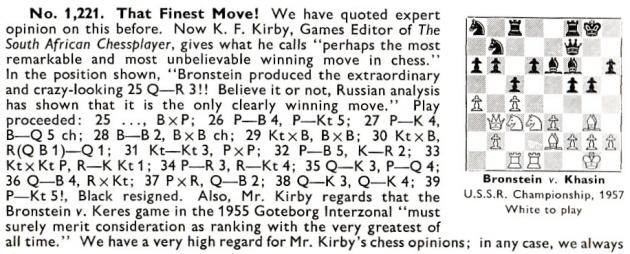
The position was also discussed by Irving Chernev on page 43 of The Golden Dozen (Oxford, 1976):
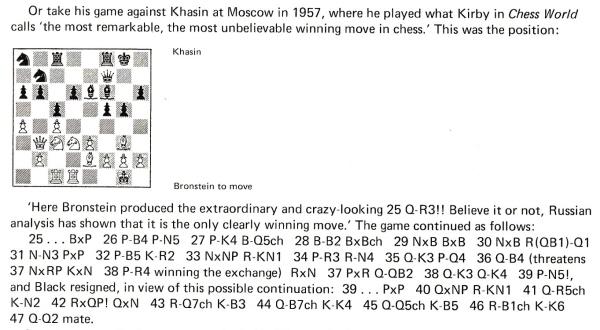
8681. The co-author who came from nowhere
Man versus Machine was brought out by H3 Publications in the United States shortly after Kasparov was defeated by Deep Blue in New York in May 1997. The co-authors (mentioned on the imprint page with regard to ‘entire contents copyright’) were named as David Goodman and Raymond Keene.
Apart from a few differences in topping and tailing, the identical book was published in the United Kingdom by Buzan Centres. That edition specified Tony Buzan as a co-author, even though his name had appeared nowhere in the US book.
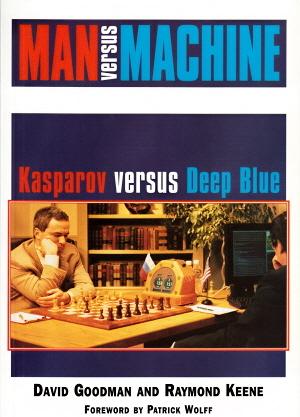
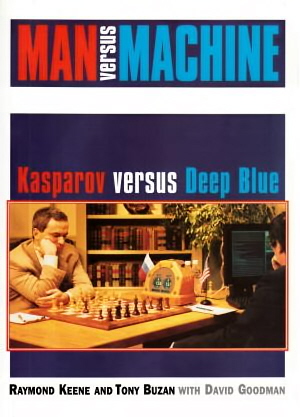
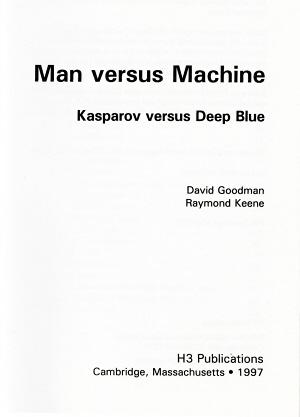

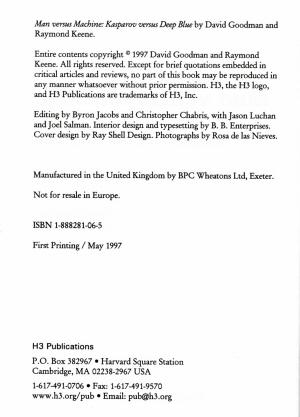
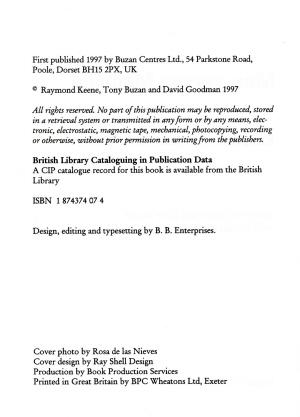
8682. Sammy Greenberg
An addition to Chess and Untimely Death Notices is offered by Avital Pilpel (Haifa, Israel) from Mendel Marmorosh’s chess column on page 4 of Davar, 27 May 1938:
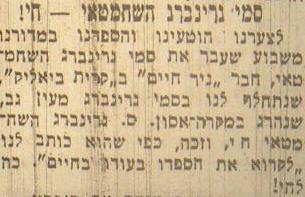
Our correspondent provides this translation:
‘Sammy Greenberg the Chessplayer – Alive!
We were unfortunately misled, and wrote an obituary last week in our column about Sammy Greenberg the chessplayer, a member of the “Nir Hayim” [agricultural commune – A.P.] in Kiryat Biyalik. We confused him with Sammy Greenberg from Ein Gev, who was killed in an accident. S. Greenberg the chessplayer is alive and managed, as he writes to us, “to read his own obituary”. Long may he live.’
8683. Enrique Sánchez of Walthamstow
Concerning chess prodigies, the following comes from page 166 of CHESS, April 1940:
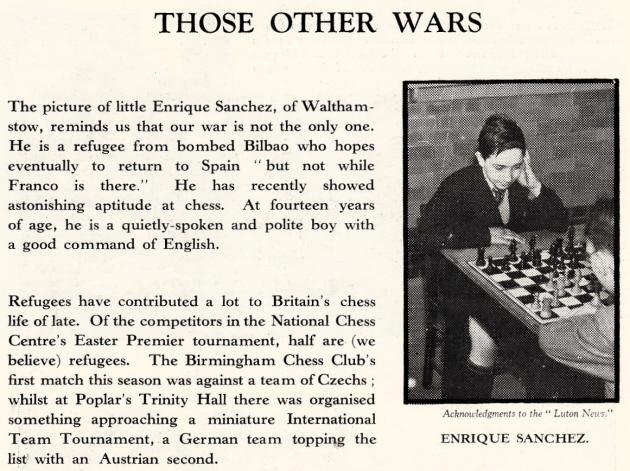
8684. References to chess in language courses
Unsurprisingly, chess is seldom referred to in language courses, with the exception of Russian. One manual for beginners even has a text which mentions Karpov:
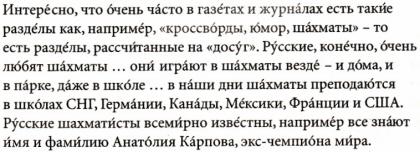
Source: page 170 of Complete Russian by Daphne West (London, 2010). On page 122 of an earlier edition, published under the title Teach Yourself Russian, a source for the passage was given: Sputnik.
A text featuring chess was included on pages 169-171 of The Penguin Russian Reader edited by P.H. Meades (Harmondsworth, 1969). It ended as follows:
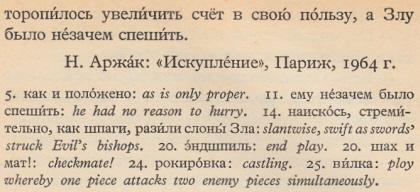
8685. Spassky in Ottawa
Philip Jurgens (Ottawa, Canada) supplies a photograph taken during his game against Spassky (1 e4 e6 2 d4 d5 3 Nc3 Bb4 4 e5 c5 5 a3 Bxc3 6 bxc3 Ne7 7 Nf3 Nbc6 8 a4 Qa5 9 Bd2 c4 10 h4 Bd7 11 h5 O-O-O 12 h6 gxh6 13 Rxh6 Rdg8 14 g3 Rg6 15 Rh5 Nf5 16 Bh3 Nce7 17 Ng5 Be8 18 Rxh7 Rh6 19 Rxh8 Rxh8 20 Kf1 Bxa4 21 Qc1 b5 22 Kg2 Rf8 23 Bg4 Qc7 24 Qa3 Rg8 25 Qb2 Rg7 26 Rh1 Ng6 27 Bh5 Nfe7 28 Qc1 Qd8 Drawn) in a simultaneous exhibition at the Bayshore Mall in Ottawa on 2 October 1995:
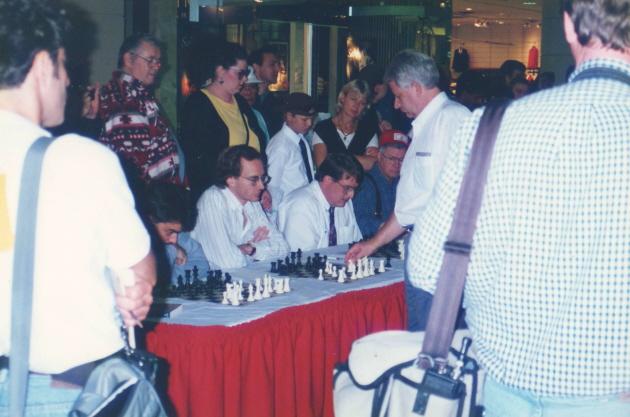
Mr Jurgens mentions that a report on the display on pages 42-44 of En Passant, December 1995 gave two games: Spassky’s draw with Herb Langer and his only loss, to Robert Inkol.
8686. Lipschütz
Harry Golombek wrote as follows about Bogoljubow on page 76 of Chess Treasury of the Air by Terence Tiller (Harmondsworth, 1966):
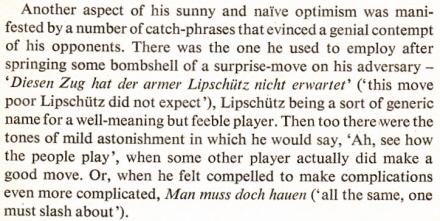
8687. ‘The father of modern chess’
Who was ‘the father of modern chess’? An Internet item on ‘New Orleans Notables’ confers the title upon Morphy. Some other sources (such as the entry on nicknames in Sunnucks’ Encyclopaedia of Chess) claim that it was Nimzowitsch, but the player most often so called is Steinitz (e.g. on page 196 of Horton’s Dictionary of Modern Chess). However, on page 167 of the June 1888 issue of Steinitz’s International Chess Magazine the sobriquet was used, by the magazine’s London correspondent, to describe Philidor.
The above is the text of C.N. 2323, and page 344 of A Chess Omnibus also pointed out an article about Philidor entitled ‘The Father of Modern Chess’ on pages 207-214 of the May 1893 BCM. See too C.N. 4773. Page 95 of The World of Chess by A. Saidy and N. Lessing (New York, 1974) asserted that ‘Paul Morphy is often hailed as the father of modern chess’.
The term has often been used unthinkingly or uninformedly by the unthinking or uninformed. On page 249 of Chess Catechism (New York, 1970) Larry Evans put ‘the father of modern chess’ as a description of Tarrasch.
8688. Brooklyn Daily Eagle
From Larry Crawford (Milford, CT, USA):
‘In your article Chess History Research On-Line John Hilbert mentioned the on-line archive for the Brooklyn Daily Eagle. It is now being phased out in favor of a new site which has the full 1841-1955 run of the newspaper, an improvement over the 1841-1902 coverage offered by the old site.’
8689. Capablanca: rule-changes and variants (C.N.s 5618, 5619, 6838 & 8480)
Christian Sánchez (Rosario, Argentina) notes that yet another master who expressed opposition to Capablanca’s proposals was Rubinstein, as reported on page 4A of the Brooklyn Daily Eagle, 16 February 1928.

8690. FIDE presidential campaigns
Wanted: leaflets, manifestos, statements and other documentation in relation to FIDE presidential elections of all periods. It is hoped that a future item will be able to identify high and low points and to show how campaigns have changed over the years.
From our reading so far, nothing compares in quality to the FIDE Facts written by the late Hugh Myers in 1986.
8691. Alleged Philidor portrait (C.N.s 3431 & 3448)
Below is page 47 of La fabuleuse histoire des champions d’échecs by Nicolas Giffard (Paris, 1978):
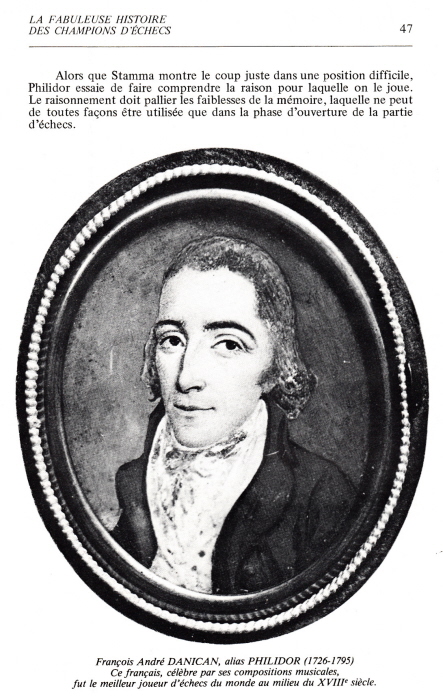
As mentioned by a correspondent in C.N. 3448, the picture had previously appeared, in colour, on page 79 of The World of Chess by Anthony Saidy and Norman Lessing (New York, 1974). Page 248 stated that it came from the Cleveland Public Library.
We are grateful to the Library for providing us with a scan of the original portrait:
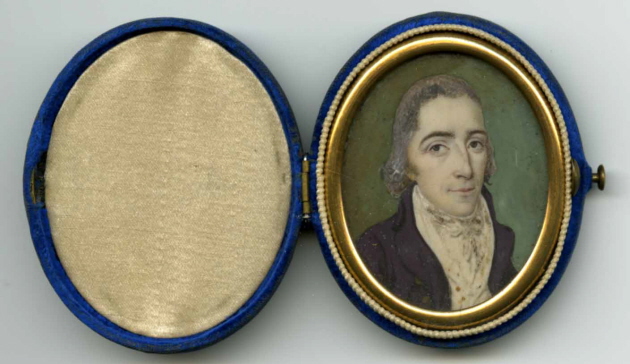
The World of Chess and La fabuleuse histoire des champions d’échecs gave the picture in reverse form, as did page 46 of volume 3 of Lademanns Skak Leksikon by Svend Novrup (Copenhagen, 1982).
The Cleveland Public Library has also sent us documentation about the picture, including a letter dated 8 November 1988 from Jean-François Dupont-Danican and the Library’s subsequent conclusion on a catalogue card that researchers should be discouraged from attributing the portrait to Philidor.
8692. Sam Loyd
A few lines about Sam Loyd from page 186 of William Steinitz, Chess Champion by Kurt Landsberger (Jefferson, 1993):

The references ‘(34)’ and ‘(23)’ relate to entries in the ‘Bibliography’, on page 472. Thus Landsberger’s misinformation that Chess Strategy was published in 1882 (the book was dated 1878) is ascribed simply to the Deutsche Schachzeitung, without any date of issue or other particulars. Landsberger’s source for the Steinitz quote is merely Irving Chernev’s The Bright Side of Chess (with a mix-up over the publication details of the US and UK editions). McFarland & Co. Inc.’s decision to publish William Steinitz, Chess Champion is as bewildering as the encomiums which the back cover of the 2006 paperback edition was able to cite.
Chernev did indeed give the Steinitz quote, without a source, in The Bright Side of Chess (see page 109), and also, in a ‘once’ version, at the start of an article on the inside front cover of the May 1950 Chess Review:
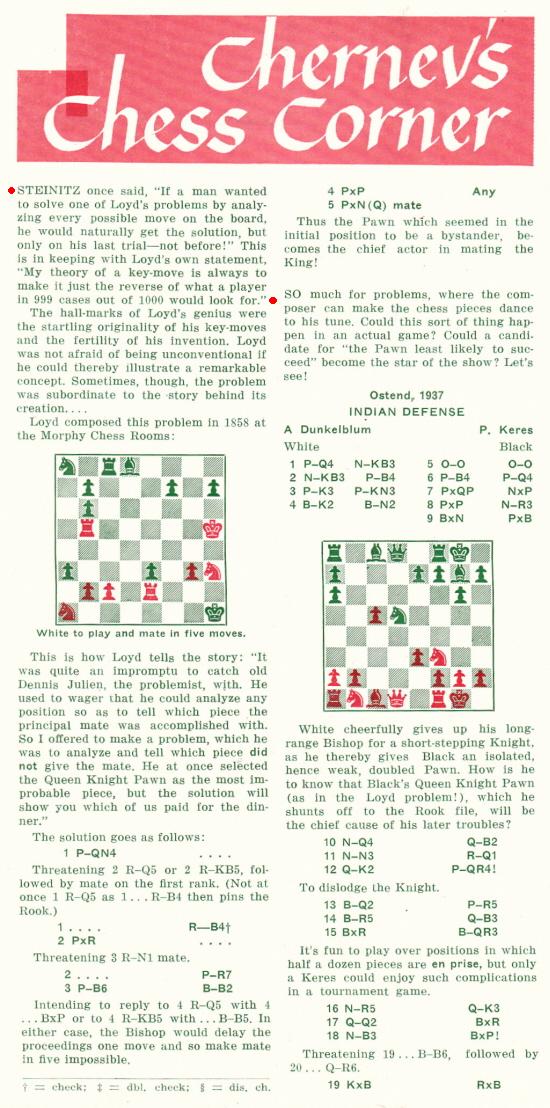
The Loyd section was reproduced by Chernev on page 153 of The Chess Companion (New York, 1968).
But when did the remarks by Steinitz and by Loyd himself first appear in print? Michael McDowell (Westcliff-on-sea, England) notes that they were both included in an unsigned article on pages 83-85 of the December 1904 issue of Lasker’s Chess Magazine:
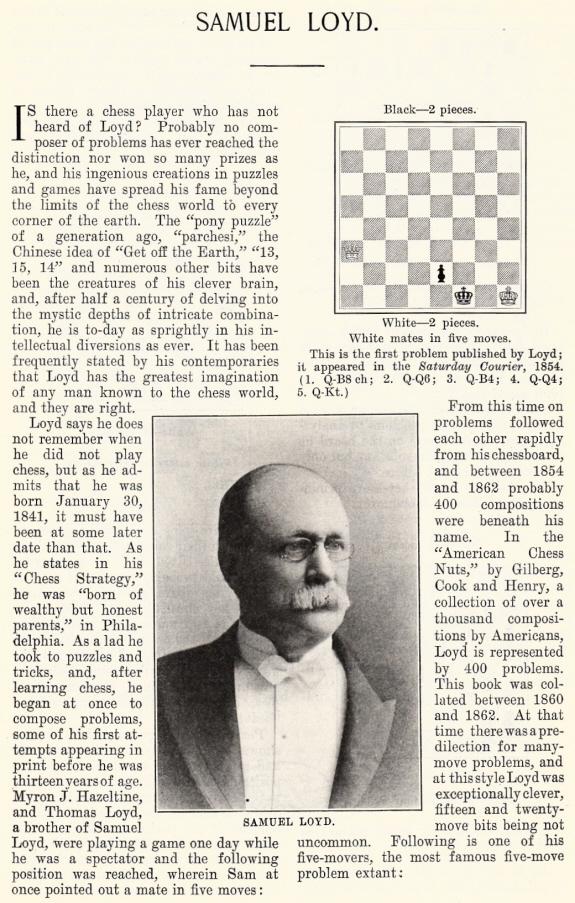
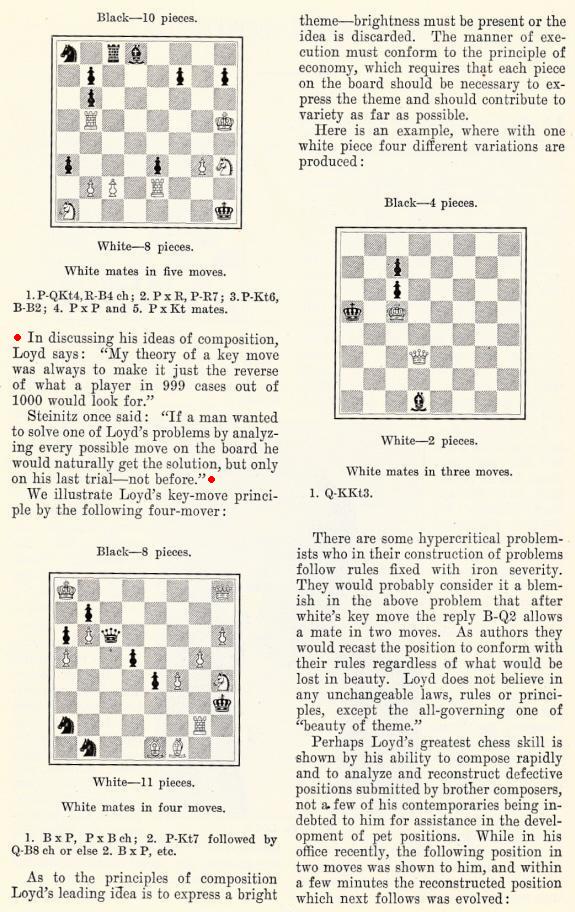
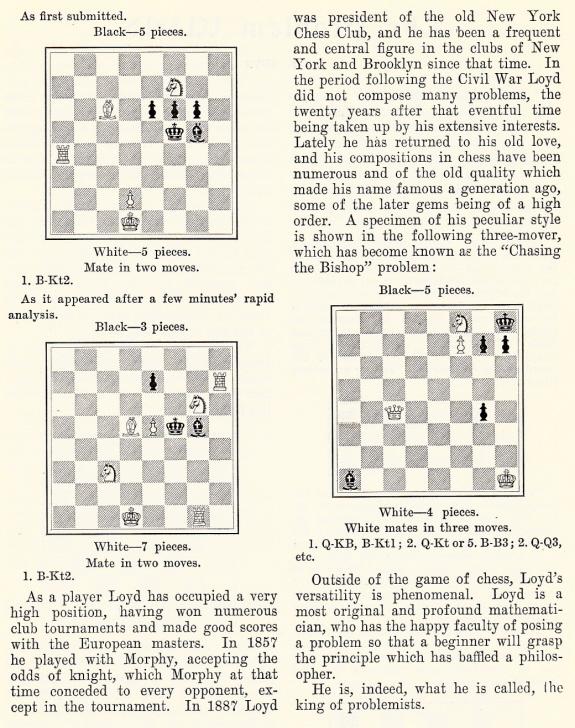
The mast-head named Loyd as an ‘Associate Editor’ of Lasker’s Chess Magazine, and he had a regular column (‘The Problem World’).
Is it possible to find earlier appearances in print of what ‘Steinitz once said’?
8693. Citations
Continuing with the ‘once’ theme, we give a snippet from page 324 of Pump Up Your Rating by Axel Smith (Glasgow, 2013), a highly interesting book:
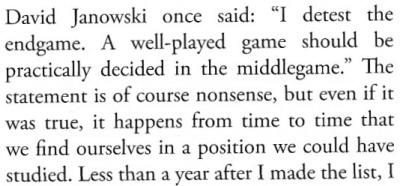
In the bas quartiers of the Internet this Janowsky quote appears regularly and sourcelessly. As mentioned on page 396 of Kings, Commoners and Knaves, it comes from Capablanca’s Lectures book:

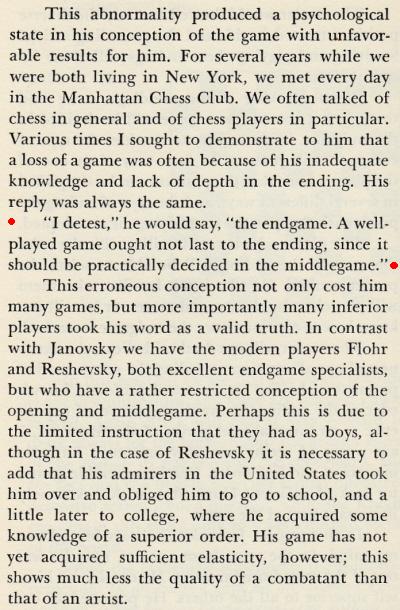
This adds the worthwhile information that Janowsky often expressed such a view about the endgame, and that Capablanca strongly disagreed with it.
With respect to sourcing, it may be unrealistic to expect Pump Up Your Rating to include bibliographical references to the same extent as should an academic or historical work, but even if it is too finicky to give full details, the Lectures book can easily be mentioned without upsetting the narrative flow.
It is a matter of writing technique (selection and presentation), and we have picked the Janowsky example because there are particular difficulties in giving a brief, accurate reference. Capablanca’s text comes from pages 73-74 of Last Lectures, published by Simon and Schuster, New York in 1966, but the passage was on pages 77-78 of the UK edition, which was published by Herbert Jenkins Ltd., London in 1967 under a different title, Capablanca’s Last Chess Lectures.
A further consideration is that the lectures were written in Spanish. C.N. 5838 raised the question of whether the sound recordings had survived, and we are grateful to David DeLucia (Darien, CT, USA) for permission to reproduce here four items from his collection which were shown on pages 266-267 of volume two of In Memoriam (Darien, 2012):
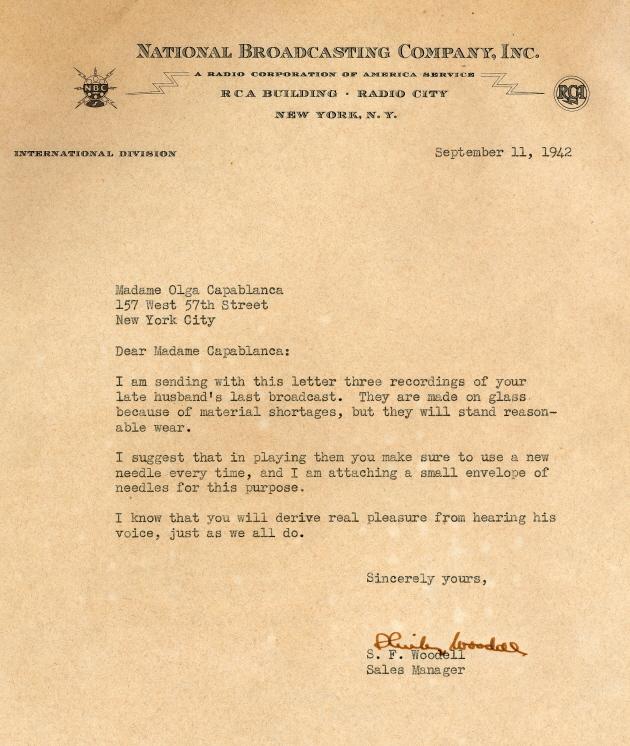

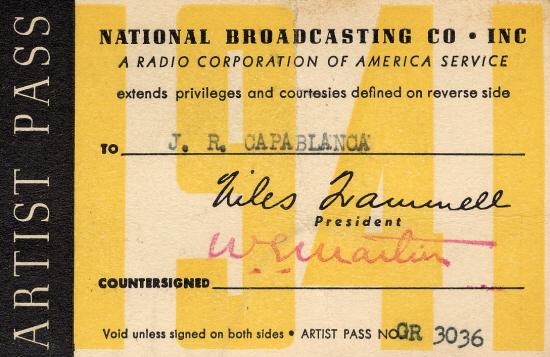
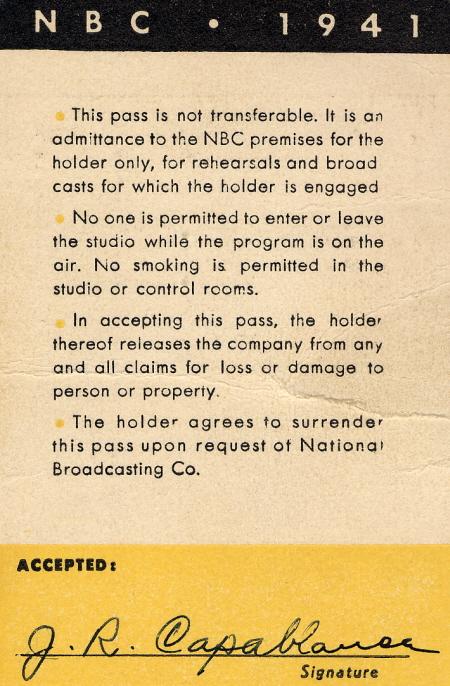
8694. Jean-Louis Preti
The h5 square on the photographic
chessboard in C.N. 3590 has a minuscule picture of
Jean-Louis Preti (1798-1881), the chess author and founder
of La Stratégie. Lewis Kellert (Gaithersburg, MD,
USA) has now sent us this fine version:
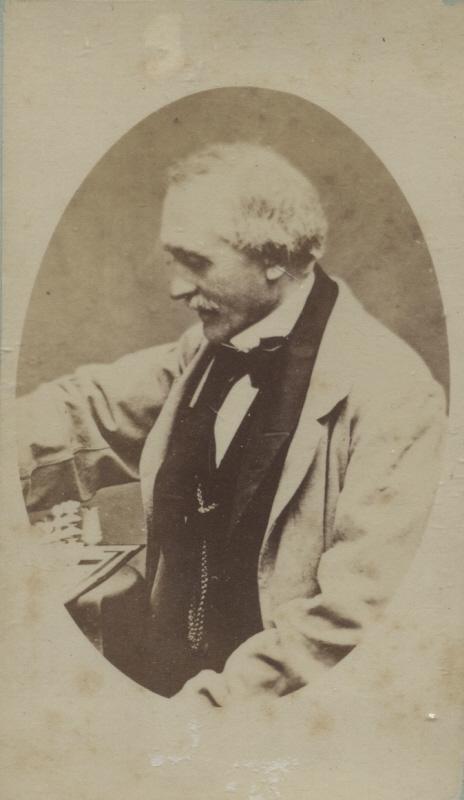
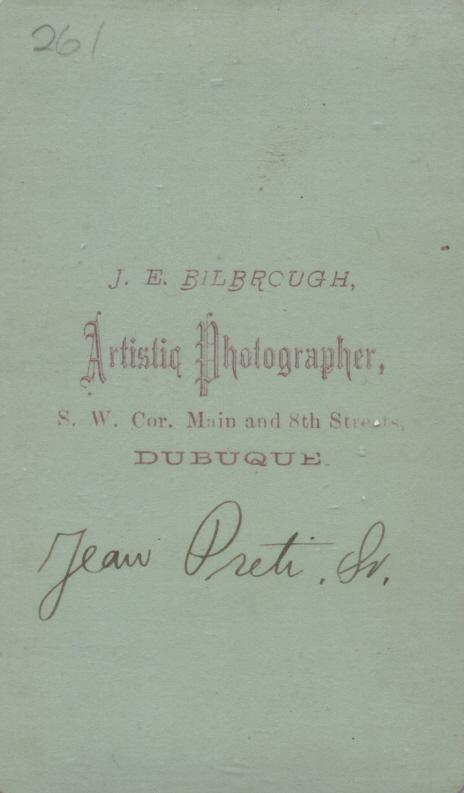
8695. Defining a chess combination
A detailed attempt to define a chess combination was made by Georges Renaud on page 59 of the November 1927 Chess Amateur (in a translation from a series of articles by Renaud which had begun in L’Eclaireur du Soir on 31 August 1927):
‘A “combination” is a manoeuvre obtaining for the player who executes it – and without the adversary having any effective defence if the combination is sound – a certain advantage such as the gain of material (a pawn, the exchange, a piece), a mating attack, improvement of the position, and finally (in the case of starting from an inferior position) a draw by stalemate, perpetual check, or reduction of force below mating strength.
A combination in the minds of many amateurs is something hidden and necessitating a sacrifice. Both these conditions are absolutely superfluous.’
8696. For deciphering
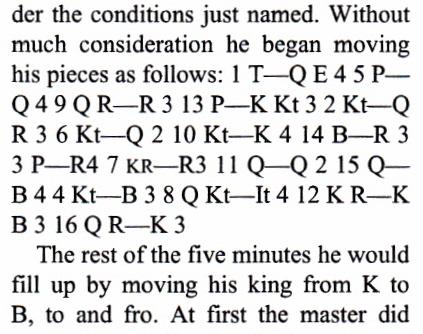
8697. Henry
Chadwick (1824-1908)
C.N. 2342 (see page 386 of A Chess Omnibus) quoted from page 9 of The Game of Chess by Henry Chadwick (New York, 1895):
‘If ever there was a game calculated to bring into prominent view the idiosyncrasies of individuals, it is chess. It shows up a man’s prevailing characteristics at times so plainly that he who runs may read. The faults of human nature, as shown in conceit, selfishness, obstinacy, ill-temper and meanness, are brought out into prominence in playing the game, as strikingly as are the virtues of humility, generosity, good temper, and a charitable consideration of your adversary’s weak points. The amenities of social life, of course, have their influence in suppressing, to a certain extent, any conspicuous exhibition of one’s faults; but they do not altogether repress the tendency to show a man up in his true colors. In fact, in the eager desire for victory in a contest in which one’s mental power is brought into play, and in a game in which the element of chance is entirely eliminated, a man is apt to exhibit his prominent traits of character very plainly at times.’
We can add here that the article in question had already appeared on pages 260-261 of the December 1886 issue of Outing. An Illustrated Monthly Magazine of Recreation:
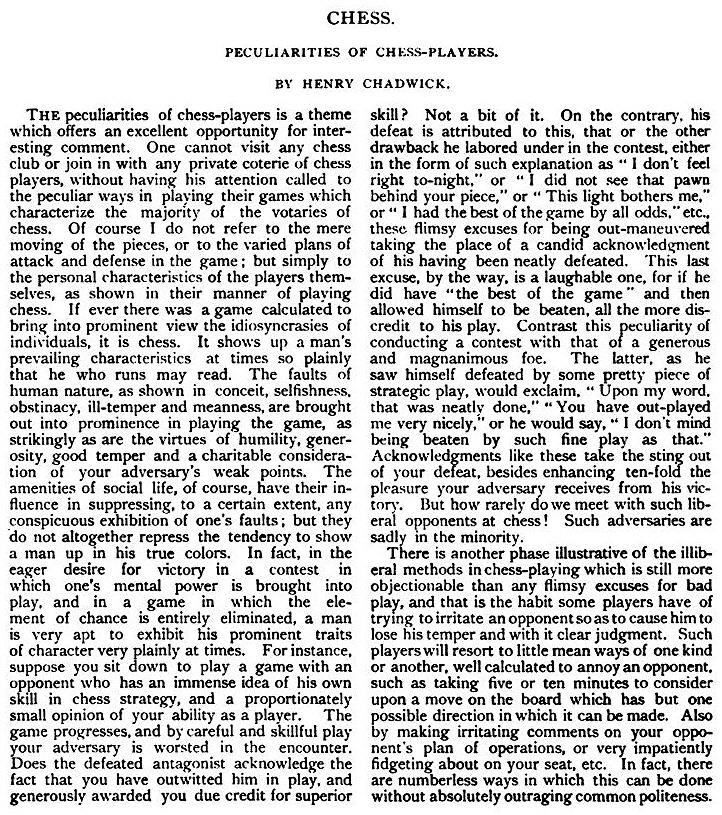
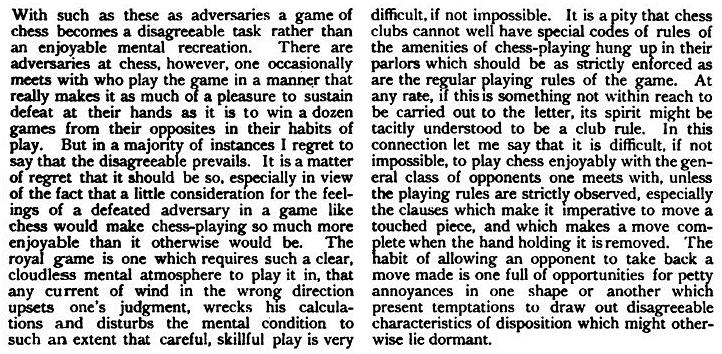
Chess and Baseball refers to “The Father of Baseball” A Biography of Henry Chadwick by Andrew J. Schiff (Jefferson, 2008). The book contains few references to chess (see pages 7, 226 and 237).
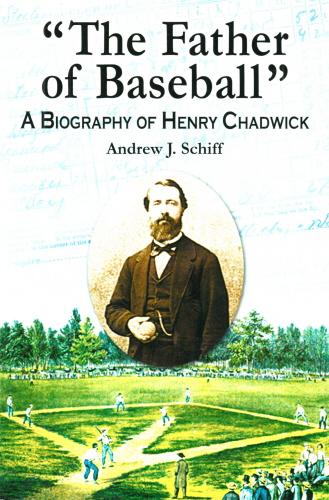
As recorded in Douglas A. Betts’ An Annotated Bibliography of Works Published in the English Language 1850-1968 (Boston, 1974), Chadwick had his name on three chess books, De Witt’s American Chess Manual (New York, 1880), The Game of Chess (New York, 1895) and How to Learn to Play the Game of Chess (New York, 1906):
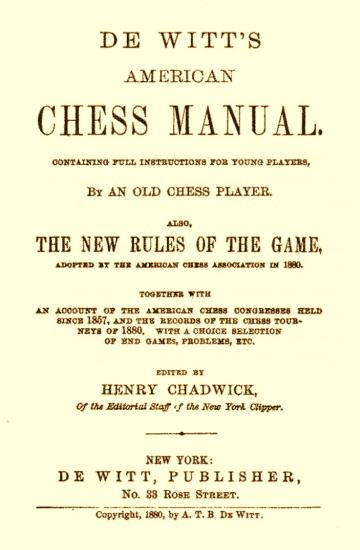
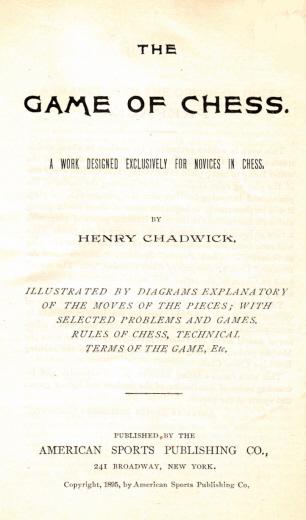
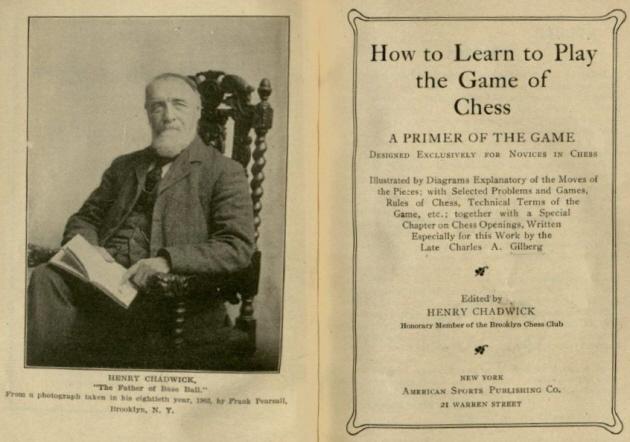
The books published in 1895 and 1906 had merely Chess as the title on their front covers. Below is the latter:
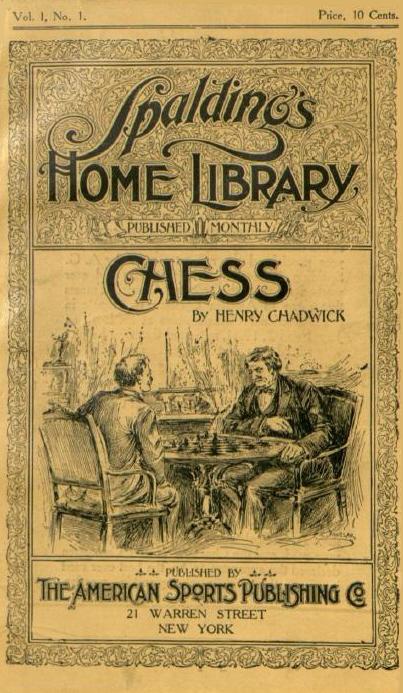
The front cover of the much shorter 1895 work was almost the same (‘July 1895’ at the top, and a different price and address).
Today it is possible to buy reprints of the 1880 and 1895 books. Despite falling well short of the production standards of Dover Publications, Inc., they have value, but a diagram-free edition of How to Learn to Play the Game of Chess which uses optical character recognition software is horrendous. For example:

The relevant section of the original 1906 edition:
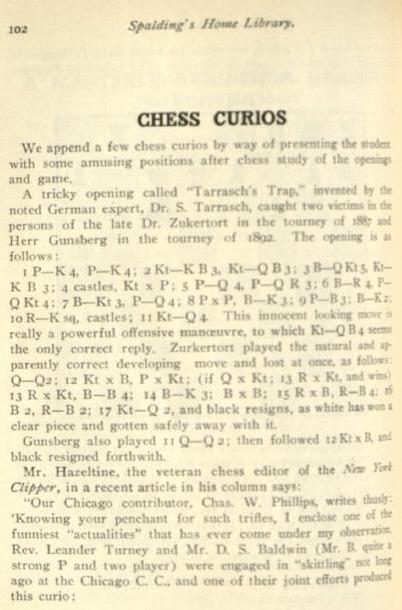
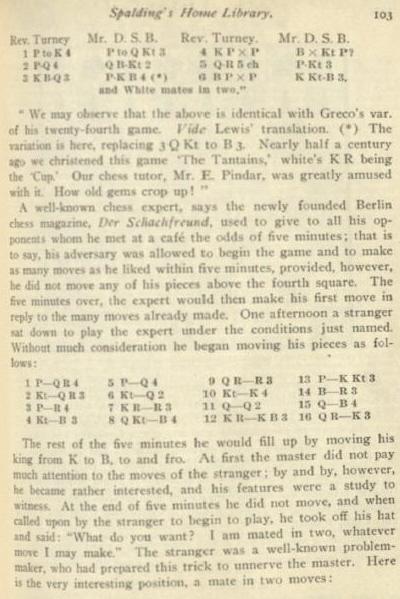
8698. Philidor chessmen
From John Townsend (Wokingham, England):
‘C.N. 7757 contained information about registration of the design of “The Philidor Chess Men” for Class 2 (wood). The same design was also registered in Class 13 (lace), its registration particulars having survived in a document, BT 44/31, at the National Archives. This shows that design number 69559 was deposited on 29 May 1850, the proprietor being “Revd. John Hales Sweet” of “Prince of Wales’s Road, Kentish New Town”. The “Subject of Design” is entered as “The Philidor Chessmen Class II & XIII”.
Another document, BT 43/421, contains a representation of the Class 13 design which is very similar to the illustration in C.N. 7757, but without the portrait of Philidor.
According to John Venn’s Alumni Cantabrigienses (volume 6, page 94), John Hales Sweet was born on 9 January 1819, the eldest son of William Sweet, a nurseryman, of Clifton, Gloucestershire, and his wife, Mary Ann. He matriculated at Wadham College, Oxford on 1 June 1837 and obtained his B.A. at St John’s, Cambridge in 1844. He was ordained deacon at Ripon on 17 December 1843 and served as curate at Hunslet from 1843 to 1846. Venn also notes that he lived without cure at Pinner, 1859-67, and at Southampton, before becoming rector of Kilmacow, County Kilkenny, 1872-80. He died on 31 May 1880.
The 1851 census (National Archives, HO 107 1498, f. 626) records him as a “Proprietor of Land & Houses”, but the London Gazette of 20 January 1854 (page 195) noted the bankruptcy of John Hales Sweet, seedsman, florist, dealer and chapman, of Tunbridge Wells, Kent. His debt problems persisted. In 1861 he was sued for debt by a tradesman in the Southampton County Court, and the judge ordered him to be committed for 21 days, but with the sentence suspended for seven days (Hampshire Advertiser, 2 February 1861, page 6).
In C.N. 5844 Michael Clapham referred to Sweet’s chess column in the American Chronicle. He had several children, one of whom, Mary Ann Ethel, married Harry Smith, of Montreal, Canada, in 1880.’
8699. The Pillsbury attack
‘The player who achieves the happy arrangement of pieces known as the Pillsbury attack may then sit back and relax. So powerful is this system that the game will play itself!’
So wrote Irving Chernev on page 382 of 1000 Best Short Games of Chess (New York, 1955):
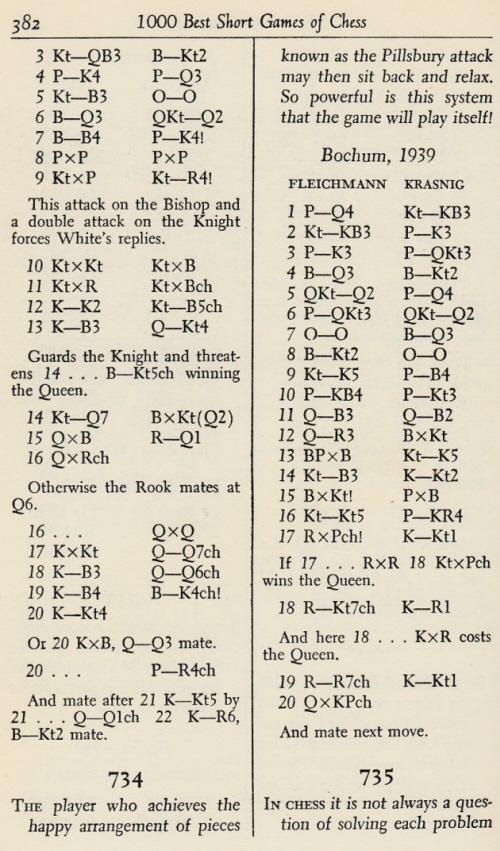
Verification is sought regarding the players’ names and the occasion. There was a win by Fleischmann against Kraßnig at Carlsbad, 1939, as shown by the crosstable on page 137 of the 1 May 1939 issue of Deutsche Schachblätter:
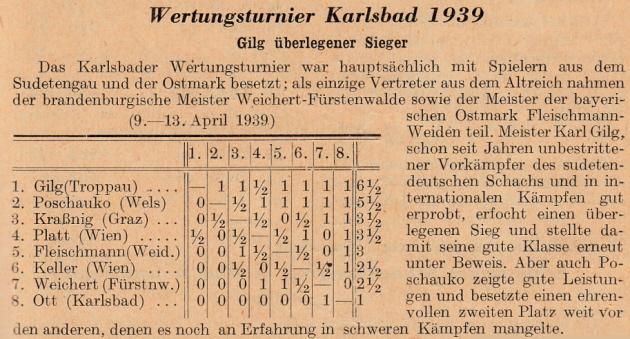
8700. Alekhine v Wreford Brown
From page 275 of the July 1928 BCM:

The blindfold game against Damant [sic] is on pages 339-340 of the Skinner/Verhoeven collection of Alekhine’s games. The other one is given below, from page 26 of the 19 July 1928 edition of the Brooklyn Daily Eagle:
Alexander Alekhine (blindfold) – Charles Wreford
Brown
London, 8 June 1928
Centre Counter Game
1 e4 d5 2 exd5 Nf6 3 d4 Nxd5 4 Nf3 c6 5 Be2 Bf5 6 O-O e6 7 c4 Nf6 8 Nc3 Be7 9 Re1 Nbd7 10 Bf4 O-O 11 Nh4 Nh5 12 Nxf5 Nxf4 13 Nxe7+ Qxe7 14 Bf3 Qb4 15 Qd2 Ng6 16 b3 Rad8 17 Rad1 Nf6 18 Qc2 Qa5
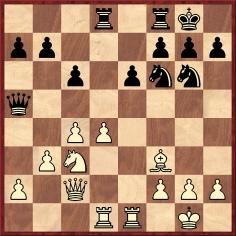
19 Ne4 Rxd4 20 Nxf6+ gxf6 21 g3 Rfd8 22 Kg2 Rd2 23 Qb1 Qg5 24 Rxd2 Rxd2 25 Re4 Qa5 26 Re2 Ne5 27 Bh5 Rxe2 28 Bxe2 Qd2 29 Qe4 Ng6 30 a4 f5 31 Qf3 Qg5 32 Kf1 Qc1+ 33 Kg2 Qg5 34 Kf1 Drawn.
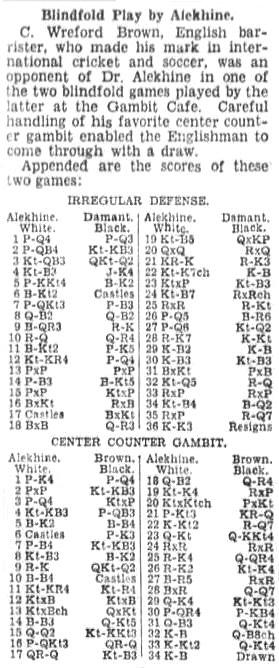
| First column | << previous | Archives [119] | next >> | Current column |
Copyright: Edward Winter. All rights reserved.
